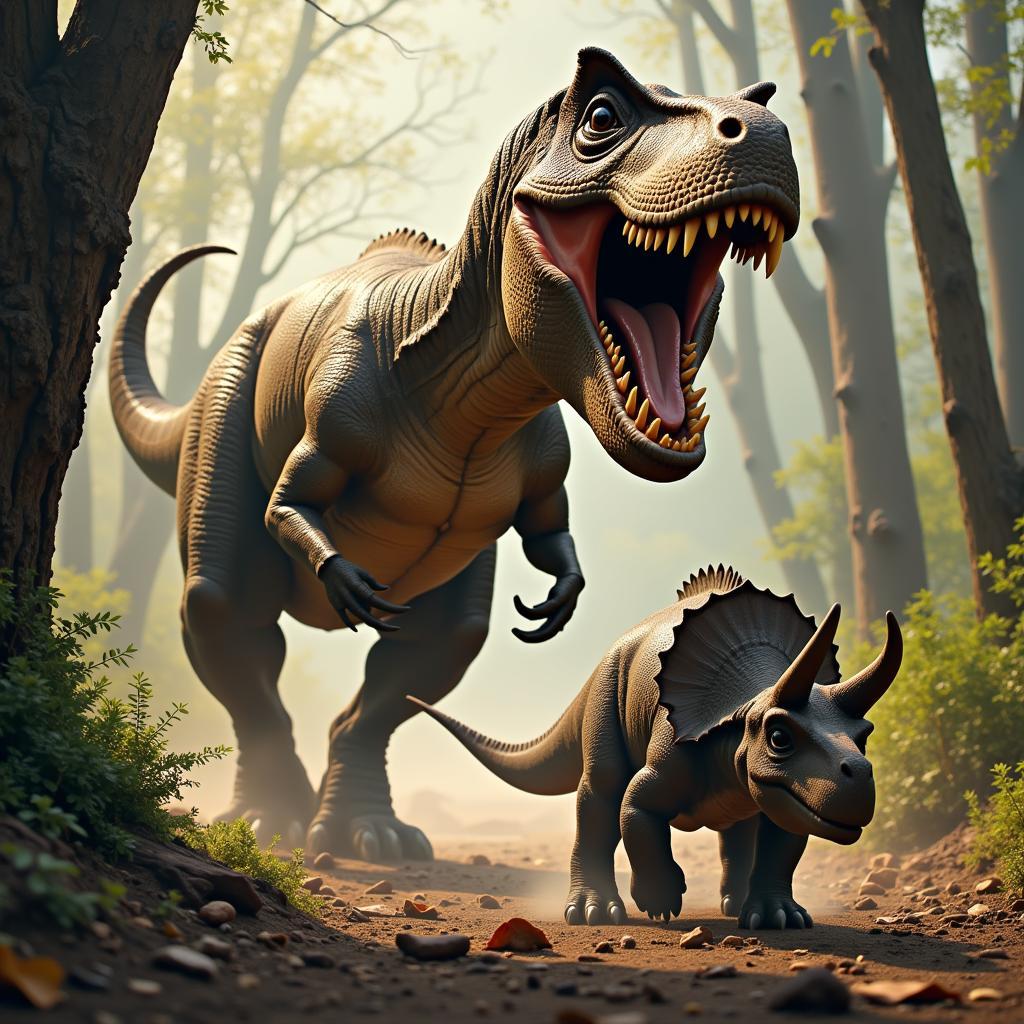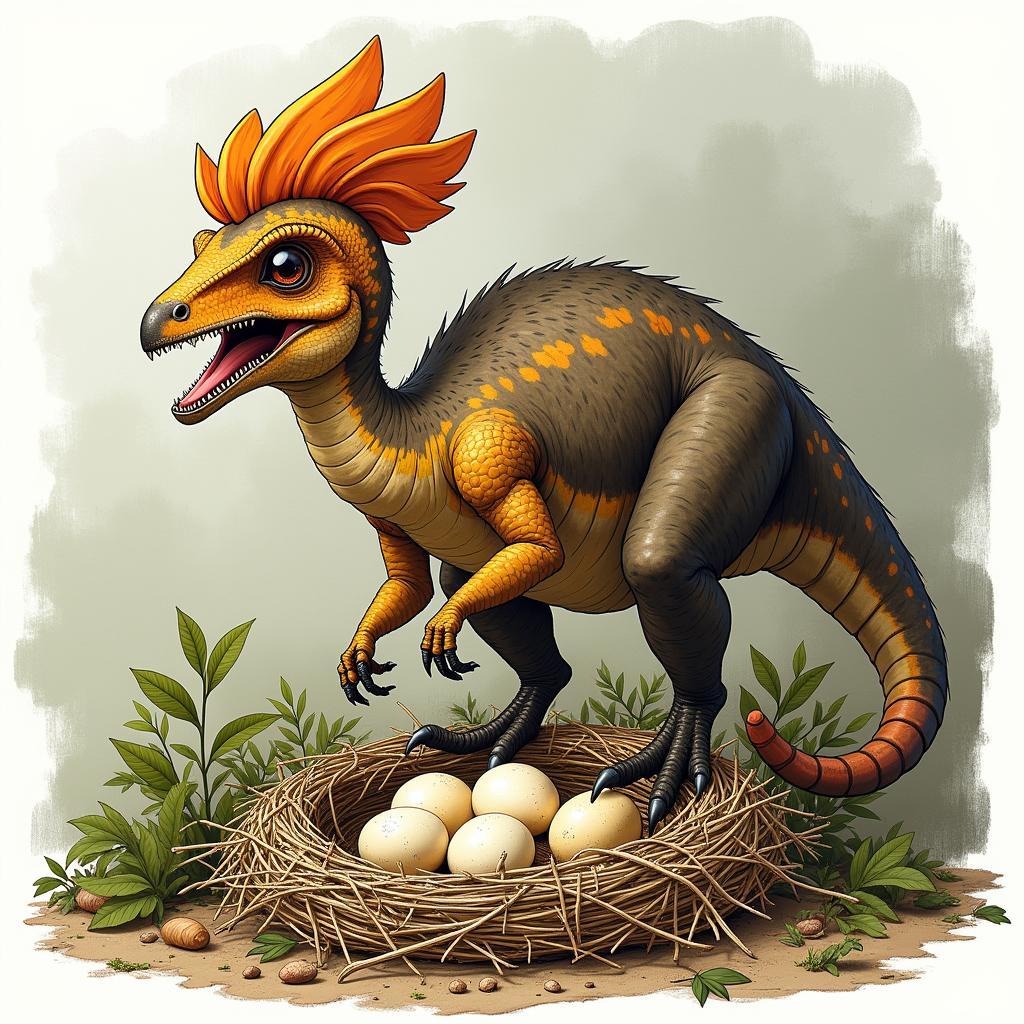Have you ever wondered what exactly fueled those massive dinosaurs roaming the Earth millions of years ago? While we can’t travel back in time (yet!), deciphering “Dinosaur Food Labels” is possible. Just like we find nutritional information on our modern snacks, we can use fossil evidence and paleontological research to understand the dietary habits of these fascinating creatures. Let’s dig into the fascinating world of dinosaur diets!
Herbivores, Carnivores, and Everything in Between: Decoding Dinosaur Diets
Before we break down those prehistoric food labels, let’s clarify what different types of dinosaurs ate:
- Herbivores: These gentle giants, like the long-necked Brachiosaurus and the armored Stegosaurus, feasted on a plant-based diet. Their “food labels” would showcase leafy greens, ferns, and even fruits!
- Carnivores: The fearsome predators, such as the mighty Tyrannosaurus Rex and the agile Velociraptor, craved meat. Their labels would feature other dinosaurs, smaller reptiles, and even insects.
- Omnivores: Some dinosaurs, like the Oviraptor, enjoyed a mixed menu of plants and animals. Their labels would be a fascinating blend of both worlds!
What Did Dinosaurs Eat? A Closer Look at Prehistoric Plates
Let’s examine some specific dinosaur “food labels” to understand their dietary needs:
The Mighty T-Rex: Apex Predator with a Taste for Meat
No dinosaur food label discussion is complete without the king of the dinosaurs. The Tyrannosaurus Rex, with its bone-crushing bite and massive size, was a carnivore through and through.
- Main Course: Large herbivorous dinosaurs like Triceratops and Edmontosaurus.
- Side Dishes: Smaller dinosaurs, carrion (dead animals), and possibly even fish!
 Tyrannosaurus Rex Hunting Triceratops
Tyrannosaurus Rex Hunting Triceratops
The Gentle Giant Brachiosaurus: A Towering Herbivore
Standing tall with its long neck reaching impressive heights, the Brachiosaurus had a diet as impressive as its size.
- Main Course: Conifer needles, leaves from tall trees like ginkgoes, and ferns.
- Side Dishes: Fruits, cycads, and possibly even horsetails.
The Curious Case of the Oviraptor: Omnivore on the Go
The Oviraptor, with its toothless beak and agile build, presents a fascinating case for an omnivorous diet.
- Main Course: Eggs (hence the name “egg thief”), insects, small lizards, and mammals.
- Side Dishes: Fruits, seeds, and possibly some plant material.
 Oviraptor Stealing Eggs
Oviraptor Stealing Eggs
Dinosaur Food Labels: Unlocking Secrets of the Past
Studying dinosaur diets provides us with more than just a glimpse into their eating habits. It reveals crucial information about their:
- Ecosystems: What types of plants and animals were present during their time?
- Behavior: Were they solitary hunters or pack predators? Did they migrate for food?
- Evolution: How did their diets influence their physical characteristics and survival?
By piecing together the clues from fossil evidence, coprolites (fossilized dung), and comparative anatomy, we continue to uncover the fascinating secrets hidden within those ancient dinosaur food labels.
FAQs About Dinosaur Diets:
1. Did all dinosaurs eat meat?
No, not all dinosaurs were carnivores. In fact, the majority of dinosaurs were herbivores, meaning they ate plants. Only a smaller percentage were carnivores or omnivores.
2. How do we know what dinosaurs ate?
Paleontologists use a variety of evidence to determine dinosaur diets, including fossilized teeth, jaw structures, coprolites (fossilized dung), and even fossilized stomach contents.
3. Did any dinosaurs eat fish?
Yes, some dinosaurs, particularly those living near coastal areas or rivers, are believed to have included fish in their diet. Spinosaurs, for example, are thought to have been skilled fish eaters.
4. What did baby dinosaurs eat?
The diet of baby dinosaurs likely varied depending on the species. Some may have been fed by their parents, while others may have started foraging for food on their own soon after hatching.
5. How has studying dinosaur diets helped us understand modern animals?
By understanding the diets and ecological roles of dinosaurs, we gain insights into the evolution of ecosystems and the relationships between different species, including those alive today.
Need Help? Contact Us!
For any further inquiries, please feel free to contact us at Phone Number: 02437655121, Email: [email protected], or visit us at 3PGH+8R9, ĐT70A, thôn Trung, Bắc Từ Liêm, Hà Nội, Việt Nam. Our dedicated customer service team is available 24/7 to assist you.